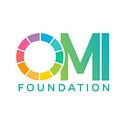#TIL: What is the 4IR and is it positively shaping the future?
By Sreelakshmi Ramachandran
Since the 1800s, periodic technological shifts and evolving scales of production have culminated in massive changes in the economy. The preceding three such Industrial Revolutions (IR), identified by their singular forward forces- Steam, Electricity and Information Technology- have powered great changes to human life.
The latest buzzword is 4IR or the Fourth Industrial Revolution or “Industry 4.0”. Built on the third IR and characterised by Digital, 4IR was set in motion in tandem with the evolution of electronics from the middle of the 20th century. 4IR has the unique ability to transcend systems and spheres, impacting the physical, digital and biological, setting it apart from the previous three.
4IR is reflective of the high-tech world we live in. This is the same world in which stark dichotomies exist between and within countries. For instance, the World Economic Forum (WEF) identifies four country archetypes based on their position in the quadrant formed between drivers and structure of production. This effectively classifies countries on the basis of the broad spectrum of economic activity related to manufacturing products and goods.
This also begs the question if the promises of the 4IR manifests uniformly across geographies, given the country archetypes proposed by one of its biggest proponents, the WEF. This is particularly relevant given the fact that “trickle down economics” was a big promise of the Third IR which largely remains unfulfilled. As evidenced by the recent employment data from India, one of the “legacy” countries, the growth of technology is marked by a simultaneous rise of jobs in the informal, low-wage category, a phenomenon with the potential to create social tension.
Evidently, 4IR identifies both the solution and the problems associated with the rapid expansion of the technological society. There is much to be explored in the technology-for-good space by combining crucial gaps in knowledge via leveraging the capabilities of machine learning (ML) and artificial intelligence (AI), the sharpest arrows in the quiver of Industry 4.0.
It remains to be seen how 4IR could barrel us to a symbiotic future, one where humans and technology exist in support of each other.
Today I learnt (TIL) is a weekly series by OMI that brings you interesting nuggets of information that you didn’t know you needed.
